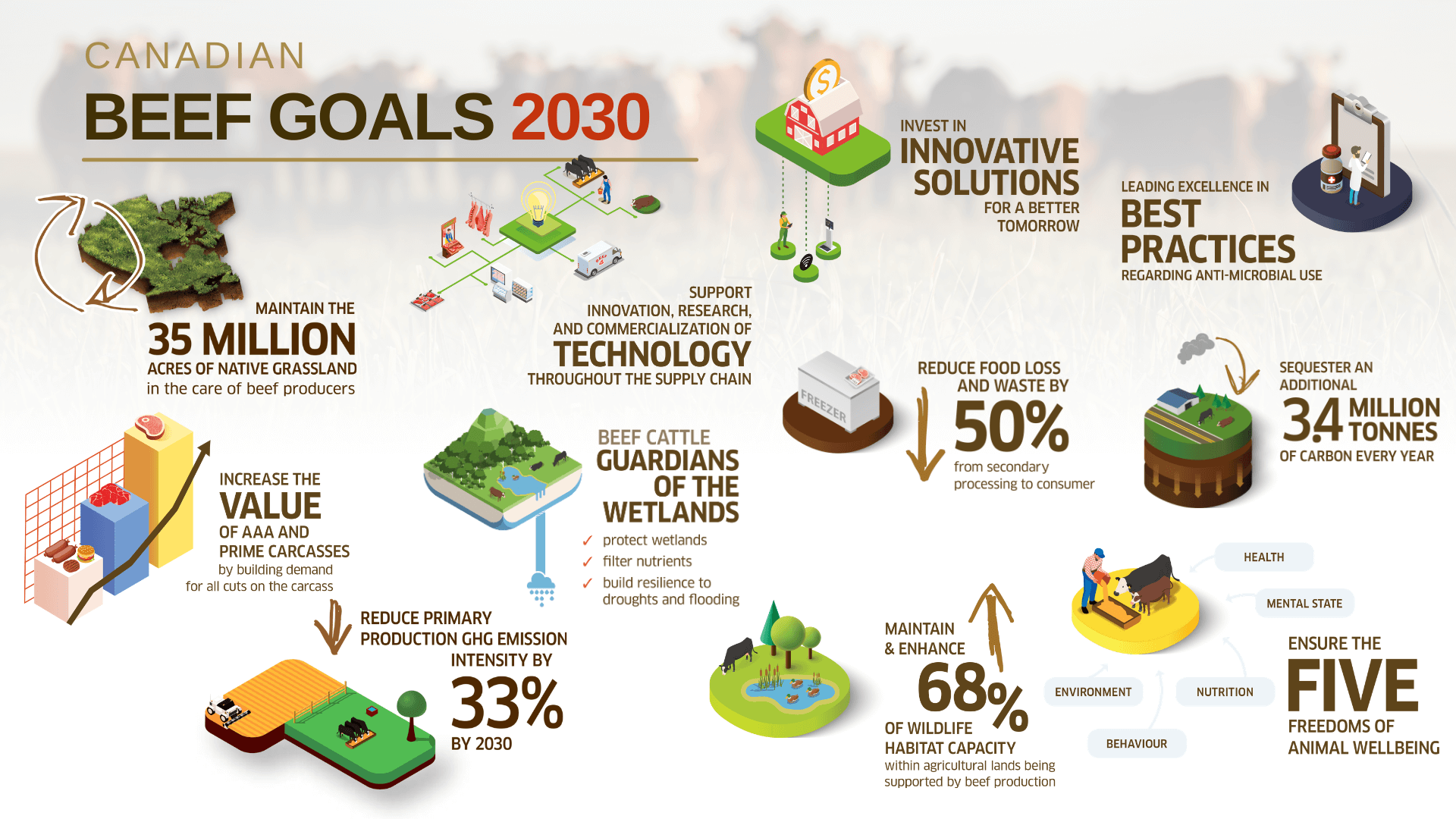Environment

Environmental Stewardship
Beef producers understand and interact with the environment on a daily basis. The production of beef and the environment are closely linked. Some examples are water (both quality and quantity), soil and air quality. It is in the best interest of beef producers to ensure ecosystems are healthy and functioning.
While each farm, ranch or feedlot is unique in their production systems and practices, producers strives to manage, and enhance environmental stewardship to the best of their abilities.
BENEFITS
Farmers and ranchers are making continual improvements to their production practices, to create efficiencies, minimize risks, and enhance their stewardship.
Cattle on the landscape help
Protect native and tame grasslands, forests, wetlands (from the effects of land use changes)
Provide wildlife habitat and biodiversity and reduce fire hazards
Many stewardship practices of managed range and pasture lands also provide important benefits to the public, governments and others. There has been increased scrutiny over the impacts of beef production.
GHG Emissions
Cattle generate greenhouse gases (GHG) when rumen bacteria produce methane as they digest feed. Additional GHG come from urine and manure (methane and nitrous oxide) and fossil fuel from machinery use used on farm (carbon dioxide).
GHG emissions in beef production represent a loss of valuable inputs such as nitrogen, organic matter, and energy. With limited and costly inputs, the beef industry has both economic and environmental drivers to reduce our footprint.
Increasing the overall productivity and efficiency of farm systems, and recovering energy and nutrients, are key strategies to reduce the emissions intensity of livestock production and help to achieve the beef industry’s ambitious 2030 goals.

Climate smart agriculture is a term associated with management practices that lower GHG emissions. Learn More about:
CLIMATE SMART AGRICULTUREImprove Public Confidence
It is important the beef sector work towards documenting current practices and future environmental improvements in order to maintain and improve public confidence and highlight successes.
Programs such as the Environmental Farm Plan (EFP), and Verified Beef Production Plus Program (VBP+) and the Canadian Roundtable for Sustainable Beef’s Certified Sustainable Beef Framework are some of the avenues that provide transparency to consumers, value chains and the public.
More Resources
This page brings a lot of existing resources together in one place to make finding information on these topics easier. The information is divided into three main categories: